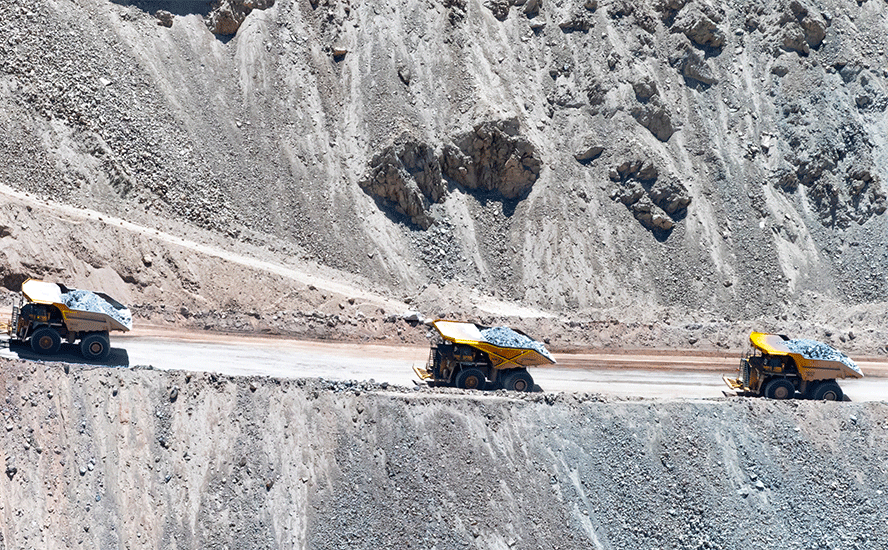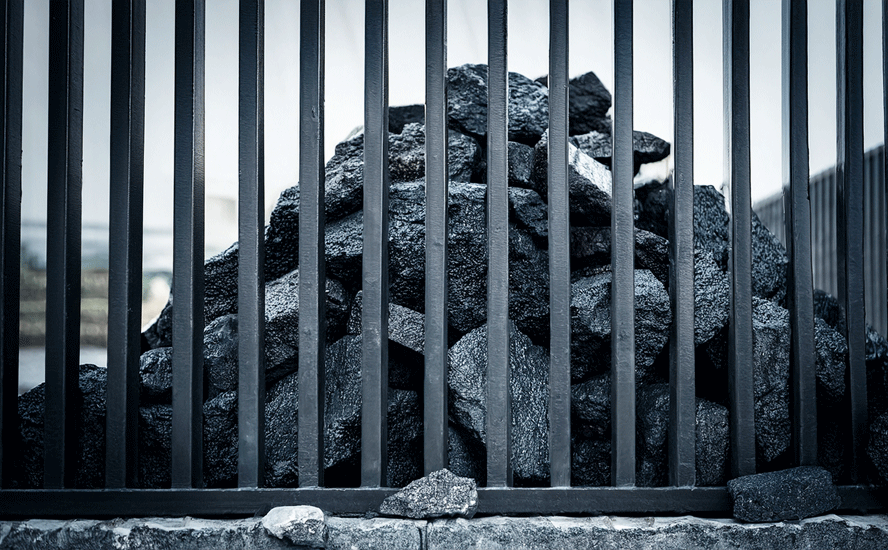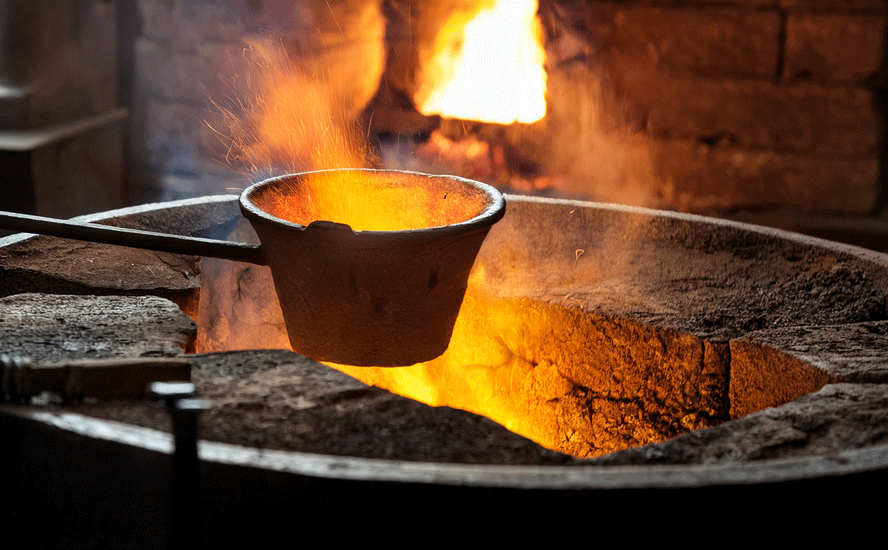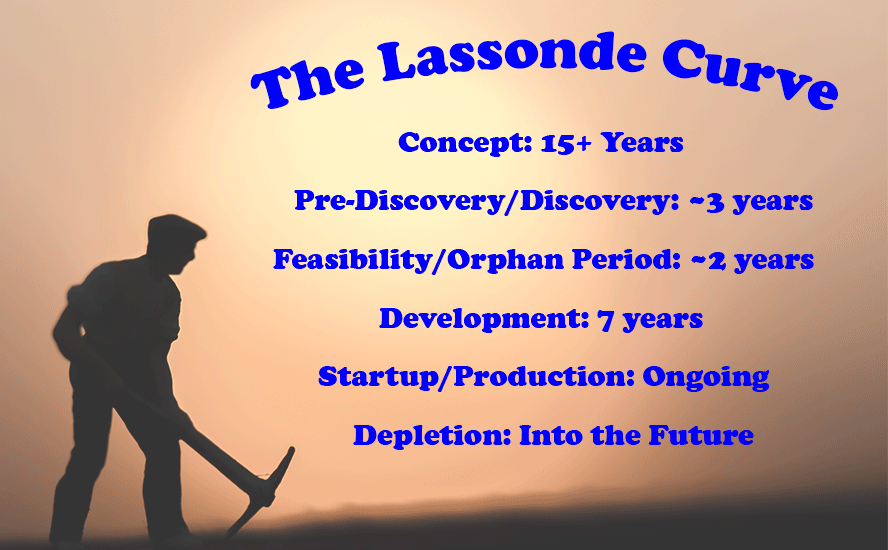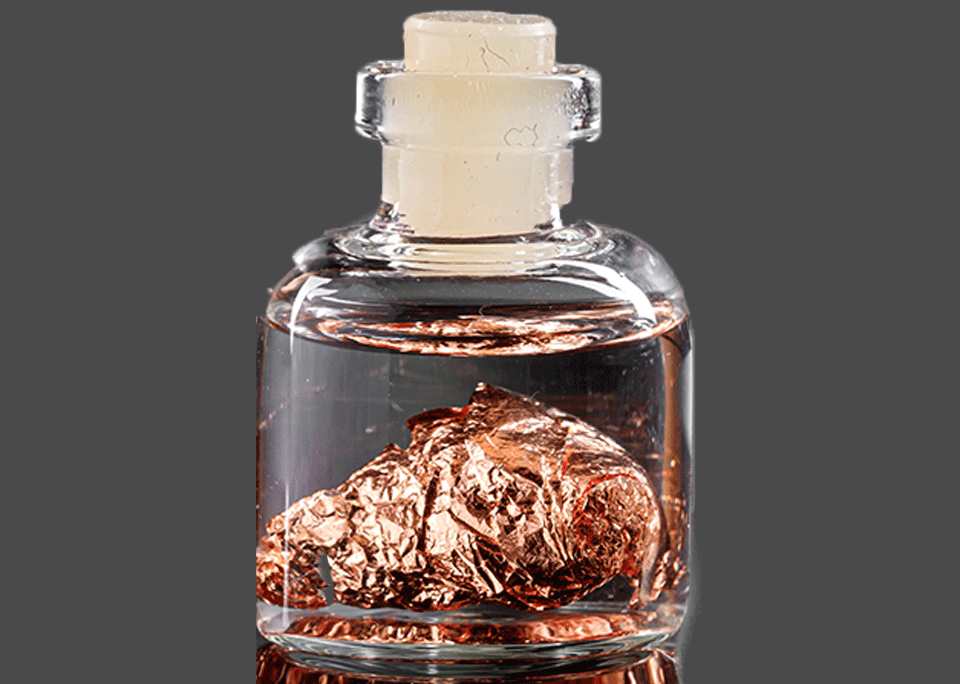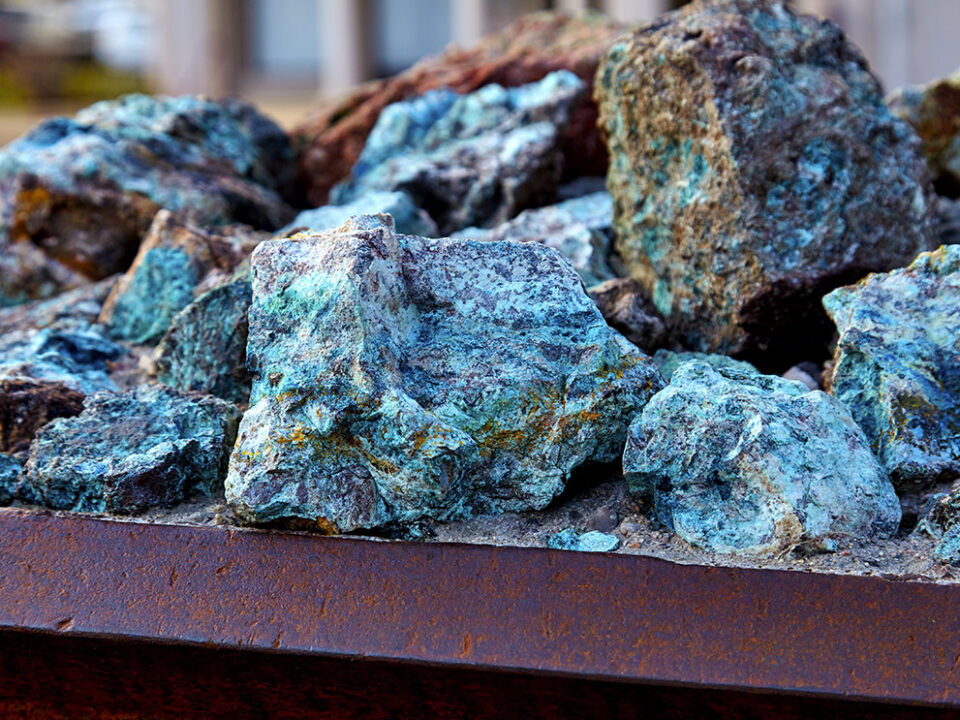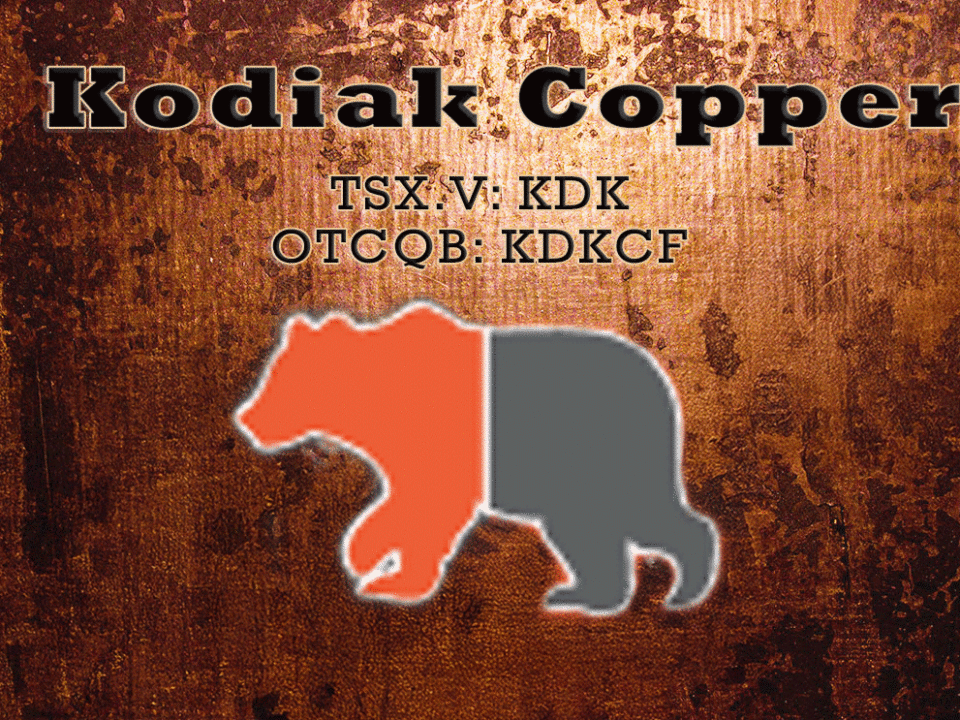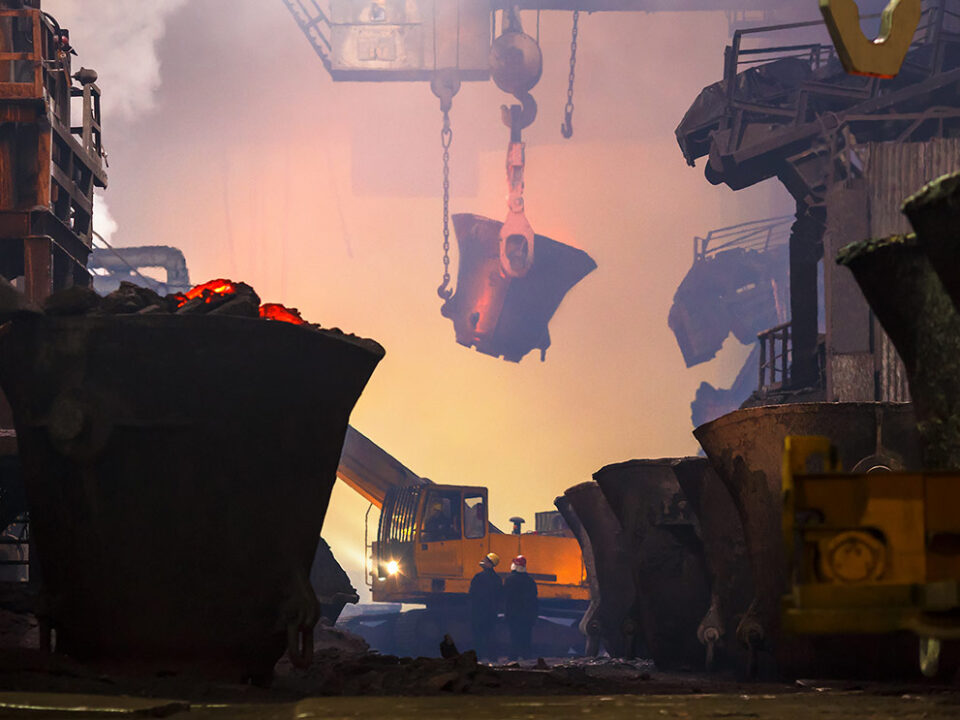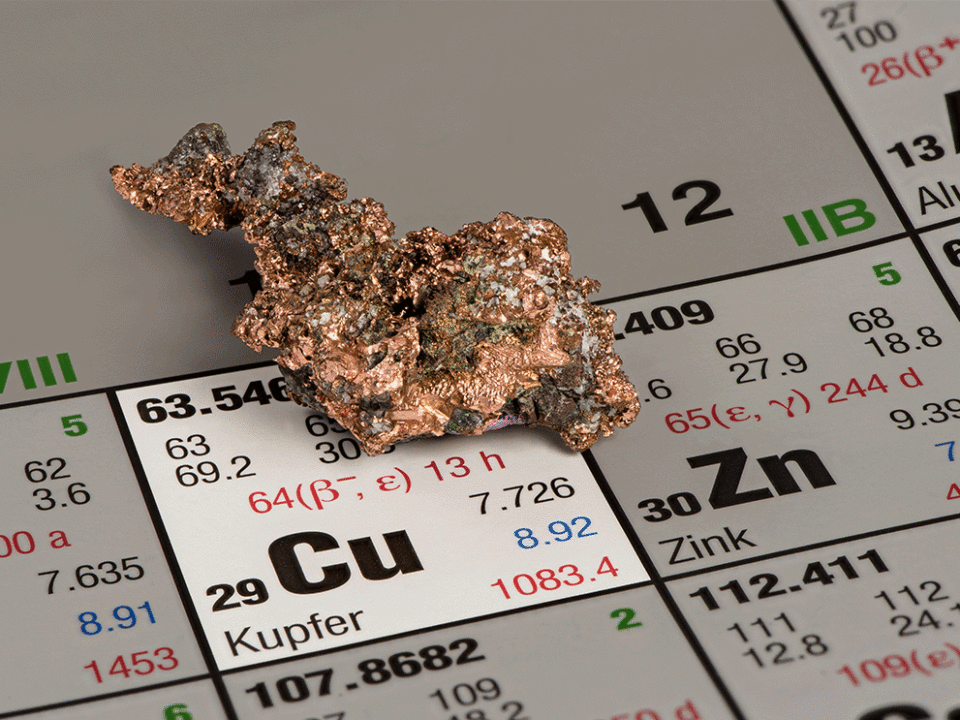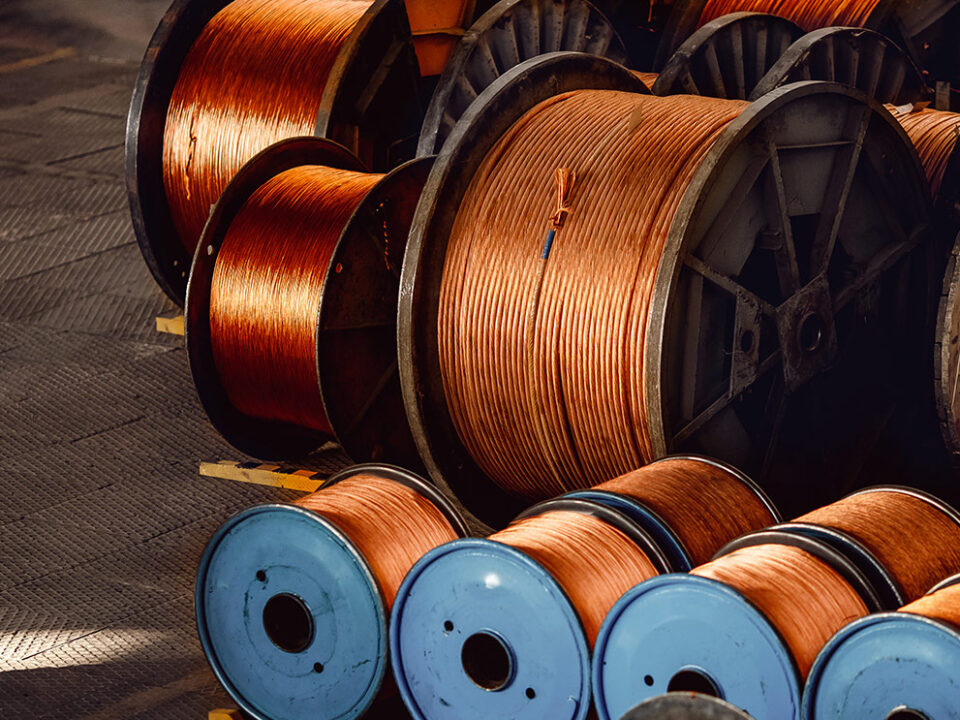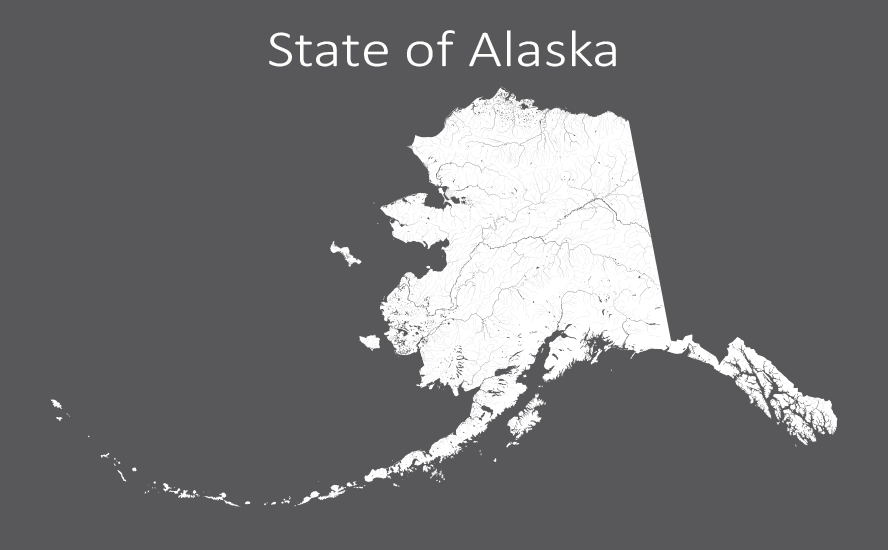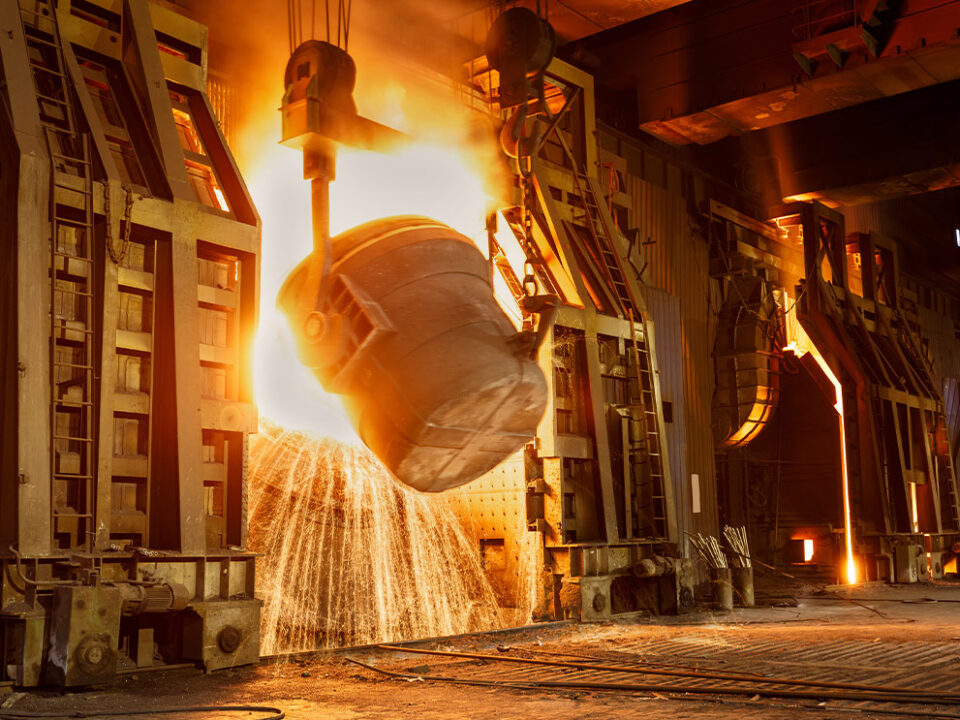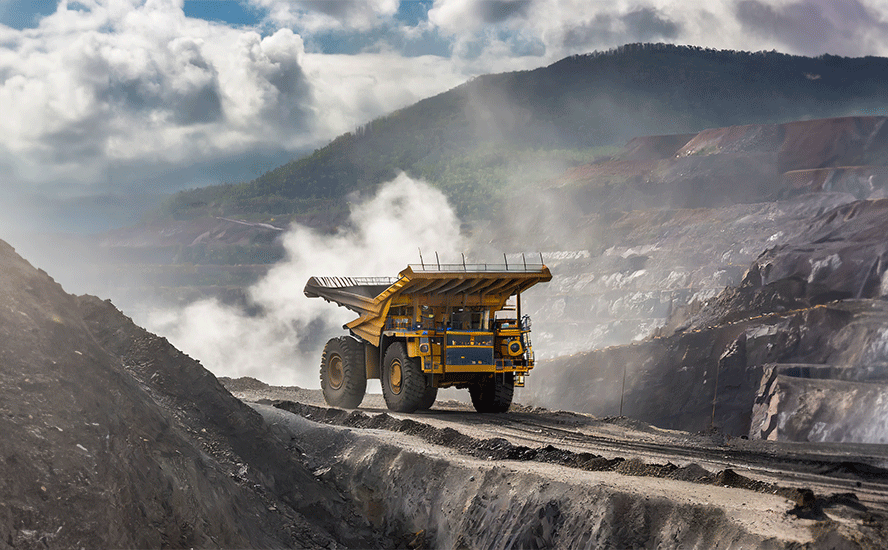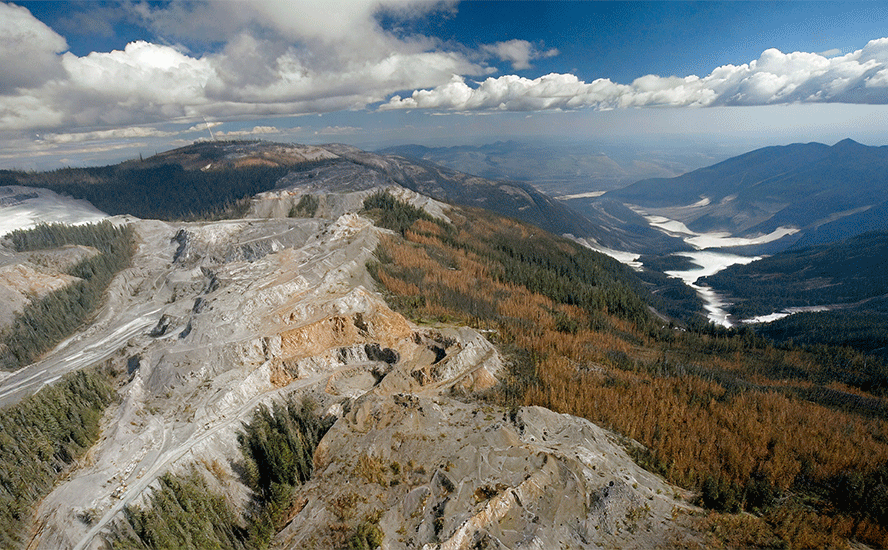Renforth expands Surimeau polymetallic property, begins drilling
- Home
- Articles
- Metals Battery Metals
- Renforth expands Surimeau polymetallic property, begins drilling
2020.11.19
Volcanogenic Massive Sulphide (VMS) deposits are one of the richest sources of metals such as copper, lead, and zinc, as well as gold and silver byproducts.
As of last year, global metal production from VMS deposits accounts for 22% of zinc, 9.7% of lead, 6% of copper, 8.7% of silver and 2.2% of gold.
These deposits are often formed during periods of rifting, when the Earth’s crust is stretched thin due to the pushing and pulling of tectonic plates in areas of ancient underwater activity. As the crust warms from this volcanic activity, the ground softens, allowing hot magma to move up towards the ocean floor.
The magma then either pushes through the Earth’s surface, thus forming a volcano, or causes cracks that draw seawater into the crust. The water is superheated and imbued with minerals, then expelled to the surface through black and white smokers. These plumes of minerals flowing from cracks in the ocean floor eventually settle back to the ocean the further they move away from the heat source.
Over time, the continual activity of the smokers and their mineral-rich plumes create mineralized beds that become the VMS deposits that we know today.
VMS Deposits in the Abitibi
There are several large VMS camps known to Canada, including the Flin Flon, Bathurst and Noranda camps. Deposits within these camps often contain 5 to 20 million tonnes of ore, and they can be much larger.
Some of these VMS deposits have already been developed into world-class mines, including the famous Flin Flon mine in Manitoba operated by Hudbay Minerals and Glencore’s Kidd mine in Ontario, the deepest base metal mine in the world.
Many VMS deposits in Canada are found within the Abitibi Greenstone Belt — the world’s largest mineral-rich greenstone geological belt. This 450 by 150 km geological structure runs through the Canadian Shield, from west of Timmins, Ontario, then eastward to Chibougamau, Quebec.
The Abitibi is home to Canada’s largest operating gold mine — the Canadian Malartic mine jointly owned by Agnico Eagle and Yamana Gold. In 2019, it yielded 662,918 ounces of gold, making it one of the best producers in the world.
While primarily known for its gold, with over 100 mines producing in excess of 170 million ounces since the 20th Century, the Abitibi has also been a prolific base metal producer. More than 400 million ounces of silver, 15 billion tonnes of copper and 35 billion tonnes of zinc have been produced within the region.
But even the biggest mines like the Canadian Malartic have depleting reserves, and those ounces will need to be replaced continuously. This natural decline of major operations presents junior miners a tremendous opportunity for exploration.
Surimeau Expansion & Drilling
Next to the Canadian Malartic, Renforth Resources Inc. (CSE: RFR) (OTC US: RFHRF) (WKN: A2H9TN) has been actively exploring the Malartic camp, seeking to unlock the polymetallic potential of the Cadillac Break. The company recently began a planned 1,000 m drill program at its newly enlarged Surimeau property following the staking of an additional 219 claims (area outlined in blue on the map below).
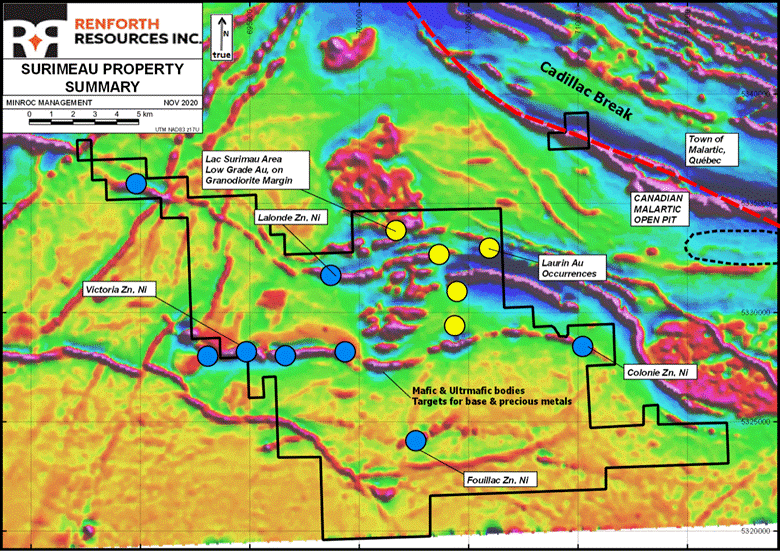
Surimeau property map
This property — now covering a total area of 215 km2 — is host to a known polymetallic (copper and zinc) mineralized system with additional geophysical anomalies. There is also an ultramafic nickel system nearby.
The project represents the consolidation of four historic properties into one property for the first time, creating an approximately 50 km mineralized geophysical system within southern (20 km) and northern (30 km) arms.
Drill holes will be sited to undercut the Victoria West nickel-zinc-copper mineralized trend to obtain new mineralized intervals, fresh rock and a more complete picture of the mineralized trend than can be obtained by surface prospecting.
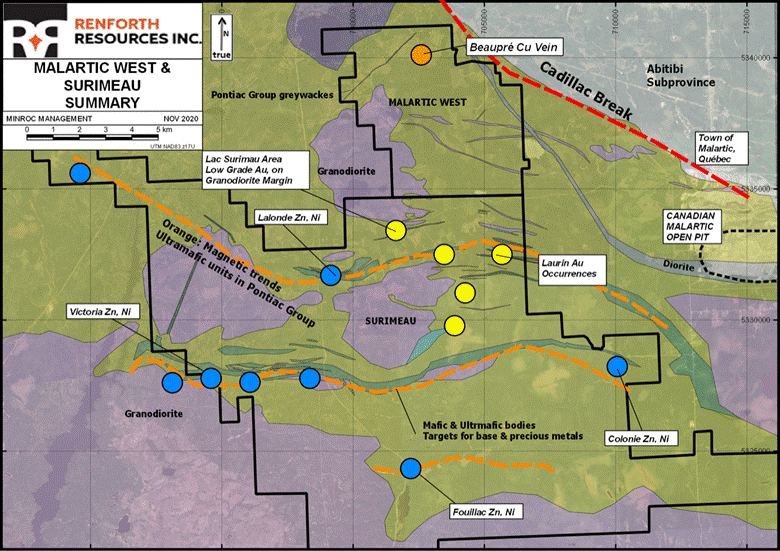
Surimeau polymetallic property
Historically, parts of the Victoria trend were initially identified as a strong airborne conductor. Follow-up drilling during the 1950s and 1970s have identified a strong multi-kilometric zone of strong disseminated sulfides mineralization, without the ability to determine a genetic model.
According to Renforth, this is a very large geophysical trend that is mostly under cover, which may pose exploration challenges for an anomaly of this size. This is why the company was able to assemble these historically explored areas of mineralization into one large property in the first place.
For now, will Renforth need to be innovative, effectively prospecting with a small drill.
“We have embarked on a drill program at Surimeau, as we were able to hire an excellent driller, with a low-impact mobile machine, to cost-effectively give us a window into parts of the 20+ km long Victoria West-Colonie southern trend,” Renforth president and CEO Nicole Brewster commented on her company’s latest exploration activity.
So far, the first drill hole in this program has already resulted in the identification in core of various types of mineralization: blue quartz veins with sulfides in felsic dykes, calc-silicate alteration in replacement of ultramafic lenses, sulfide-bearing sediments with strong biotite-cordierite alteration.
All these units share the same sulfides assemblage composed of pyrrhotite, pyrite and sphalerite.
Nickel Sulfide System
As mentioned, aside from the known copper-zinc mineralization, Surimeau also hosts a large-scale nickel sulfide-PGE system with nickel-hosted ultramafic rocks and VMS features typical of the Cadillac-Larder Lake fault zone.
As of now, the company has no definite explanation for the occurrence of two disparate systems in such unique proximity, but points out that there are similar precedents worldwide.
While nickel is mostly used for stainless steel, the metal has become increasingly vital for the production of batteries in electric vehicles. A majority of the world’s nickel comes from laterite deposits, such as those found in Indonesia and the Philippines. But they can also be produced from sulfides.
In the past, nickel sulfide ores were mostly mined in the Sudbury deposits in Ontario, Norilsk in Russia and the Bushveld Complex in South Africa, and existing sulfide mines are becoming depleted.
Thus, the nickel sulfide interpretation at Surimeau could be a significant find, as large-scale sulfide deposits are not common around the globe. Also, the property hosts nickel sulfides including pentlandite; this is the type that battery manufacturers are looking for.
Historic surface sampling in the Victoria area of Surimeau had values as high as 0.503% Ni. A team of Renforth geologists previously visited three of the four areas and took grab samples that support such findings.
Just how large this nickel sulfide system remains to be seen, but the newly acquired Fouillac showing gives an indication that there could be a large nickel deposit waiting to be outlined.
Initial prospecting at this showing resulted in several samples being taken from potential gold host environments and a nickel target similar to the Victoria West portion of the Surimeau property.
The location of Renforth’s prospecting also correlates with discrete mag high features.
Drilling at Parbec
While Renforth is kicking off a drill program at Surimeau, drilling is also continuing at its Parbec gold property, also situated within the Malartic camp and contiguous to the East Amphi portion of the Canadian Malartic property.
With the Canadian Malartic mine facing declining production, Parbec could offer nearby and accessible surface ounces, perhaps at an even higher grade than the published throughput grade (1.14 g/t) of the operating mine.

Parbec property map
So far, almost 6,000 m (17 holes) have been drilled during the fall drilling program. Assay data has been received for the first two drill holes, highlighted by new results of 13.2 m of 1.09 g/t Au, including 2.6m of 3 g/t Au, starting at only 7 m downhole.
This program was designed to add ounces to the deposit. The drill holes are infilling the NI 43-101 open pit resource model at Parbec, with some planned infill of historical drilling in the 1980s, as well as testing for downdip extension.
The company is confident that the goal of drilling 7000 m prior to Christmas will be met.
Conclusion
With drilling now underway at two properties within an established mining camp in Canada, Renforth appears to be onto something big, especially with the nickel-bearing system seen at Surimeau.
The fact that it already has its properties are all on or near major mineralized geological structures means the company doesn’t even need to waste any time and go straight into the later stages of exploration.
Funding is also not an issue, with approximately $8 million cash on hand from a previous property sale and a recent private placement which saw the company’s stock sold at a significant premium.
Renforth Resources
CSE:RFR, OTC:RFHRF, WKN:A2H9TN
Cdn$0.065 2020.11.02
Shares Outstanding 251,296,889m
Market cap Cdn$16.33m
RFR website
Richard (Rick) Mills
aheadoftheherd.com
subscribe to my free newsletter
Ahead of the Herd Facebook
Legal Notice / Disclaimer
Ahead of the Herd newsletter, aheadoftheherd.com, hereafter known as AOTH.
Please read the entire Disclaimer carefully before you use this website or read the newsletter. If you do not agree to all the AOTH/Richard Mills Disclaimer, do not access/read this website/newsletter/article, or any of its pages. By reading/using this AOTH/Richard Mills website/newsletter/article, and whether or not you actually read this Disclaimer, you are deemed to have accepted it.
Any AOTH/Richard Mills document is not, and should not be, construed as an offer to sell or the solicitation of an offer to purchase or subscribe for any investment.
AOTH/Richard Mills has based this document on information obtained from sources he believes to be reliable but which has not been independently verified. AOTH/Richard Mills makes no guarantee, representation or warranty and accepts no responsibility or liability as to its accuracy or completeness. Expressions of opinion are those of AOTH/Richard Mills only and are subject to change without notice. AOTH/Richard Mills assumes no warranty, liability or guarantee for the current relevance, correctness or completeness of any information provided within this Report and will not be held liable for the consequence of reliance upon any opinion or statement contained herein or any omission. Furthermore, AOTH/Richard Mills assumes no liability for any direct or indirect loss or damage or, in particular, for lost profit, which you may incur as a result of the use and existence of the information provided within this AOTH/Richard Mills Report.
AOTH/Richard Mills is not a registered broker/financial advisor and does not hold any licenses. These are solely personal thoughts and opinions about finance and/or investments – no information posted on this site is to be considered investment advice or a recommendation to do anything involving finance or money aside from performing your own due diligence and consulting with your personal registered broker/financial advisor. You agree that by reading AOTH/Richard Mills articles, you are acting at your OWN RISK. In no event should AOTH/Richard Mills liable for any direct or indirect trading losses caused by any information contained in AOTH/Richard Mills articles. Information in AOTH/Richard Mills articles is not an offer to sell or a solicitation of an offer to buy any security.
AOTH/Richard Mills is not suggesting the transacting of any financial instruments but does suggest consulting your own registered broker/financial advisor with regards to any such transactions.
Richard does not own shares of Renforth Resources (CSE:RFR). RFR is a paid advertiser on Richard’s site aheadoftheherd.com
Legal Notice / Disclaimer
Ahead of the Herd newsletter, aheadoftheherd.com, hereafter known as AOTH.Please read the entire Disclaimer carefully before you use this website or read the newsletter. If you do not agree to all the AOTH/Richard Mills Disclaimer, do not access/read this website/newsletter/article, or any of its pages. By reading/using this AOTH/Richard Mills website/newsletter/article, and whether you actually read this Disclaimer, you are deemed to have accepted it.


